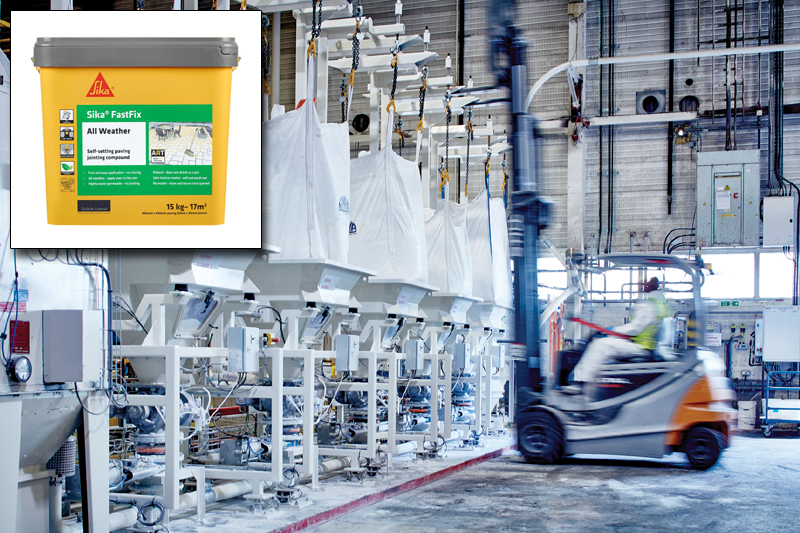
Sika Everbuild is increasing the sustainability of its packaging by using repurposed or recycled plastic across its core product range.
The company states it is aiming to reduce its use of virgin plastic by embarking on a mass roll-out of new, more sustainable packaging which it anticipates will save more than 400 tonnes of virgin plastic this year alone. The first phase focuses on some of Sika Everbuild’s most popular products, including its Stixall adhesive and Fastfix jointing compound, with a view to converting the packaging across more product ranges in due course. Customers will be able to easily identify the new packaging thanks to its dark grey colour.
Sika Everbuild says it has also invested heavily in the sourcing and testing of the new packaging to ensure that the storage, usability and performance of its products continue to meet the highest standards.
The firm’s new packaging will be manufactured using a minimum content of 30% post-consumer recycled (PCR) plastic, and the manufacturer is continuing to develop its packaging solutions, working with suppliers to increase this percentage in the future. The PCR plastic used is specifically the high-density polyethylene plastic which is commonly found in many consumer goods such as milk, shampoo and water containers, as well as sewer, water and gas pipes.
Where PCR plastic isn’t available due to rising global demand, the manufacturer has put plans in place to use post-industrial recycled (PIR) plastic if necessary. Although not recycled, it would otherwise be sent to landfill and using PIR plastic as an alternative to virgin plastic reduces the company’s reliance on raw plastic.
Having been ‘rigorously tested’ at various stages of the manufacturing process, the business is said to be confident that the new sustainable packaging is fit for purpose and will not compromise the performance or application of its products in any way. The extensive work carried out by its in-house research and development department, as well as ‘stress tests’ conducted by its suppliers, ensures that the new packaging “meets the requirements in terms of its stability, shelf-life, product performance, including application, airtightness and tolerance to pressure”.
Hannah Sumner, Senior Product Manager said: “Owing to the nature of many of our building chemical products, particularly our sealant and adhesive range, it isn’t currently possible to recycle or reuse our packaging as it can’t be cleaned to the standard required for onward recycling. That is why we have been keen to explore alternatives to using raw virgin plastics in the initial construction of our packaging in the meantime. Not only is this the stage of the process that we have the most control over but it’s here where we can make a real difference to limiting the environmental impact of our products, with no detriment to their performance or usability.
“We will be announcing other updates as we move towards our goal of using recycled or repurposed plastic as the main element of all our packaging, but the feedback that we have received from the initial roll-out of a select number of sealant and adhesive product lines has been really positive. It’s the first step on a long journey ahead but we’re committed to staying on track and helping both our stockists and end-users choose a more sustainable option, without having to compromise. By making small changes to the way we do things, we can all do our bit to protect the planet for future generations to come.”









